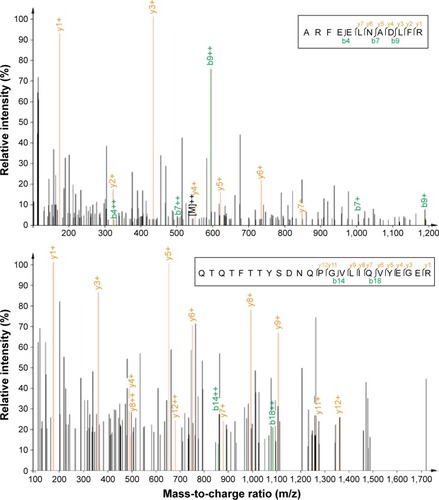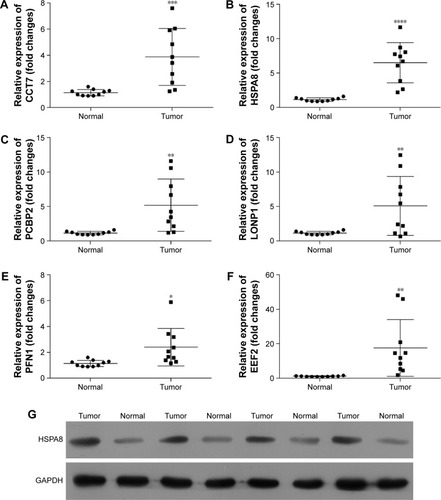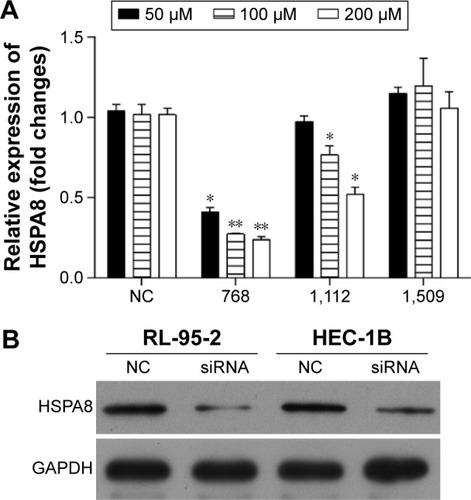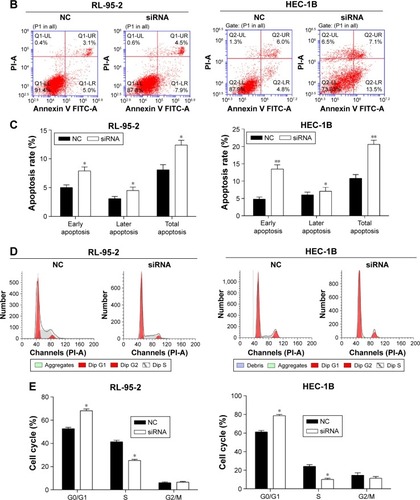Figures & data
Figure 1 Classification of the identified proteins by GO database.
Abbreviation: GO, gene ontology.

Figure 2 Representative figure showing differential isotopic labeling and LC-MS/MS.
Abbreviation: LC-MS/MS, Liquid chromatography tandom-mass spectrometry.

Table 1 KEGG pathway in endometrial carcinoma
Table 2 A partial list of novel molecules found to be highly expressed in the endometrial carcinoma tissue proteome
Figure 3 The expression of identified differentially expressed molecules in endometrial carcinoma (tumor) and pericarcinous tissue (normal).
Abbreviation: qRT-PCR, quantitative real-time polymerase chain reaction.

Figure 4 Screening of HSPA8 siRNA for knockdown of HSPA8 in RL-95-2 and HEC-1B cells.

Figure 5 The proliferation, cell cycle, and apoptosis of HSPA8 siRNA-transfected RL-95-2 and HEC-1B cells.
Abbreviations: PI, propidium iodide; NC, negative control; h, hours; FITC, fluorescein isothiocyanate.


